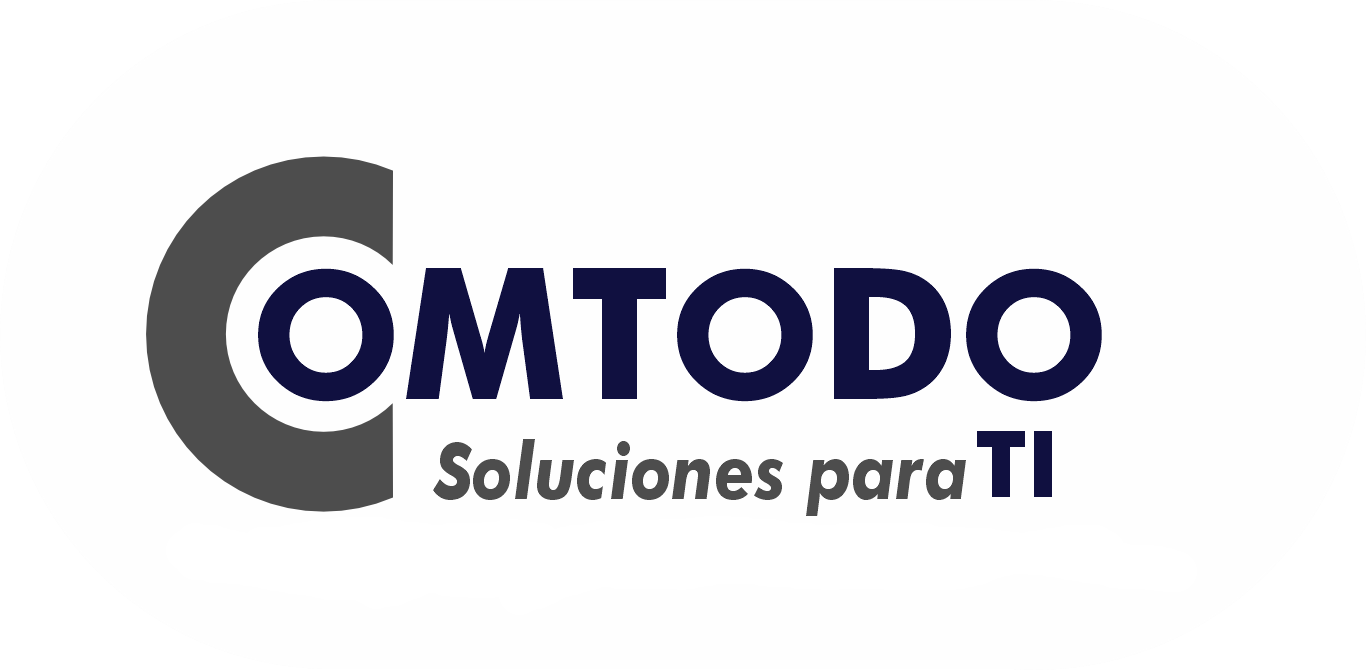How to backup in Windows
To make backup copies in Windows you will first need a backup software . These types of software create copies that are on your system so that they can be recovered in case the original data is lost or damaged.
Different backup solutions protect different types of data and different combinations of devices.
What is a backup?
For example, with Windows PCs and servers some backup and restore solutions only make copies of your files and folders . On the other hand we have the “R full duration “, to this operation is called disk image or full image backup.
The full image backup allows you to recover your system from one, saving time and effort that would otherwise have to be spent installing and configuring the operating system (OS) and applications.
Why is it important for companies to have backup and restore plans?
A wise professional once said: “There are two types of computers, those that have failed and those that will fail.”
Everyone ends up having problems with their computers (especially hard drives). According to a study by Blackblaze, in one year more than five percent of existing hard drives fail, and one in five will fail to function in four years.
Then there are the software glitches – virus attacks, malicious programs, botched updates and reconfigurations. A virus can open a security breach in your computer so that later, in a malicious attack, it encrypts your documents.
If any of these incidents involve data loss and your company does not have a backup and restore strategy, You are in danger of losing all those files that depend not only on your work, but also on your life!
How to backup Windows with Acronis Backup
Access Console
- If you have installed Acronis Backup Console In your work environment, open the Acronis Backup web console on the system where it is installed or use the following URL in any browser or any other system:
https://[nombre del equipo o dirección IP]:9877 - When on the console computer, enter “Administrator” and password, if prompted, or use the credentials of any other user who is a member of Acronis Centralized Admins .
- If you are using the Acronis Backup console on Acronis Cloud, to start the session just open https://backup.acronis.com/ and enter your email address and password.
Add your Device
- Click on All devices> Add
- Click on Windows .
- Specify the name or IP address of the machine or search your network.
- Provide the credentials of an account that has administrative privileges on that computer.
- Click on ADD.
Now you can see your team in the list.
Schedule your backup
- First select the device you want from the list and click on Backup copy.
- Rename the backup plan to make the logs and notifications easier to understand in the future.

- By default, the entire computer (all disks) will be backed up. Therefore click on the date and select what you want to include in the backup:
- Disks / volumes – Backup of all the content of the selected disks or partitions. This option allows you to exclude those USB and HDD drives or temporary locations that you do not want to backup.
- Files / folders – Backup of a selection of files and / or folders. This is the best option when creating a copy of your data . Note that this backup mode will not allow you to restore your operating system or applications, so you can use it as a secondary backup, to complement the entire computer.
- System status – Backup your Windows settings. This mode can help you restore Windows settings without having to overwrite applications and data.
Select a destination.
Acronis Backup supports a multitude of storage options:
- Local files –Fantastic option for fast computer backup and recovery that does not require the backup to travel over the network or the Internet. But nevertheless, this storage destination will not protect you from HDD failure (if you store them in the same drive) or major disasters such as fire or flood. This storage option is also 1-to-1, meaning you will have to manage each of your computers separately. It’s great for loose teams, but it’s tricky when you have to manage large environments.

- Network file – Allows you to store backups on file servers or NAS. You can perform a backup the entire environment and quickly recover it over your local network . It also protects you from local disk failures, however, it is not a good option for recovery from major disasters.

- Cloud storage – Reliable backup to have Acronis Data Centers around the world. When you store your backups in remote locations, you are guaranteed protection in case of disasters older, so you can restore your data and your business in virtually any situation. Keep in mind that cloud storage performance is highly dependent on internet connectivity and bandwidth.
Define the desired schedule.
Acronis Backup has a wide range of scheduling options, all of which are easy to configure:
-
- The default schedule is daily from Monday to Friday. You can drag a slider to change it to:
- Monthly – on selected days (eg first day of the month) or on weekdays (eg last Friday of the month)
- Weekly – on selected weekdays
- Daily – every day from Monday to Friday
- Hourly – at intervals of hours (or even minutes) in a given period
- If you are backing up to local networks or folders, you can also define the backup scheme —The rules according to which they are combined are complete, incremental and differential in their collection is called, chain . This is a brief summary:
- Full backup – Contains all the information you have backed up. These are the most reliable and independent, however their size is remarkable. The first backup done for your data is always a full backup.
- Incremental backup – Contains only the modifications made since the last backup you have created. Just as they are the fastest to create, but they need the presence of the entire chain so that they can be restored.
- Differential backup – It contains only the differences with respect to the complete backup that you have created. This backup is somewhat larger than an incremental backup, however, you only need the full backup for recovery.
- Choose one of the available schemes:
- The default schedule is daily from Monday to Friday. You can drag a slider to change it to:

- Always incremental (single file) –This is an innovative and unique technology that allows all incremental copies to be stored in a single file. You can store all the revisions you want, without having to worry about consolidation!

- Always complete – Very reliable and always complete copy, being the one that requires the greatest storage capacity of all the schemes.

- Full weekly, daily incremental –Traditional backup scheme, a favorite of many ICT professionals. It can be easily replaced by Always Incremental.

- Custom –The most flexible to adapt to all needs. You can configure multiple schedules for full, incremental, and differential backups.
- Define the schema Retention . You would like to keep all copies, but your storage capacity is limited. Acronis Backup erases old backups using very clever cleaning schemes.

- (Default) By the age of the backup –The cleaning scheme in the previous example holds monthly copies for six months, weekly copies for four weeks, and daily copies for seven days. This particular “shred” version allows you to go back in time and have date granularity for the previous week while maintaining a maximum of 17 revisions. You can change to a single rule, defining a single cutoff date.

- By number of backups – It will retain a certain number of backup copies regardless of the chosen scheme. It is the best option if your storage capacity is limited.
- Save backups indefinitely – in case your storage capacity is almost infinite, you can disable cleaning completely.
Replication
- If you want to copy your backups to another location, enable the replication.
- It is recommended to apply the 3-2-1 rule, that is, store the data in three locations, on two types of media, one of them in a remote location. With Acronis Backup you can perform your backup on your local drive or NAS and later replicate the backup copy to Acronis Cloud.
Encryption
- For additional security, enable Encryption.
- All your backups, including metadata, are encrypted according to AES-256, AES-192 or AES-128 encryption with the password you define. No one (neither you) will be able to restore, if the correct password is not provided.
- To finish click Apply . Your backup has been scheduled.
How to restore Windows with Acronis Backup
Once your backup is running, you will see it in the backup list in the Acronis Backup console. To view recovery and restore options:
- Select a storage location, then the backup, and you can see the recovery options.
- You can select a computer from the device list and click Recovery .
Recover the entire team
- If the target computer is operational, select Whole team , select as many options as necessary and click Start recovery .
- If your target machine is completely empty – start it with Acronis Bootable Media and proceed to recover it.
- You can also restore to a new virtual machine (VM) or overwrite the existing virtual machine.
File and folder recovery
- Click on Recovery and select Files / folders .
- Find and select the drive, folder and / or file that you want to recover.
- Click on Recover to restore the file to the original computer or Download to download a file through your browser.
Run the computer as a virtual machine
If you have a virtual environment running VMware vSphere or Microsoft Hyper-V, you can use Acronis Instant Restore to run a copy of your backup as a virtual machine directly from the backup storage, without the need for! move any data! This operation is extremely fast, your system can start up in 15 seconds or less. Just click Run as virtual machine In the recovery view, provide the options and click Run now .
Try Acronis Backup
Acronis Backup offers you comprehensive, flexible and easy-to-use options to back up any of your Windows computers and restore entire systems on the same or different hardware, restore files and folders, and virtual machines.
Whether your business is small, large or multinational, with Acronis Backup you can protect all Windows systems.





